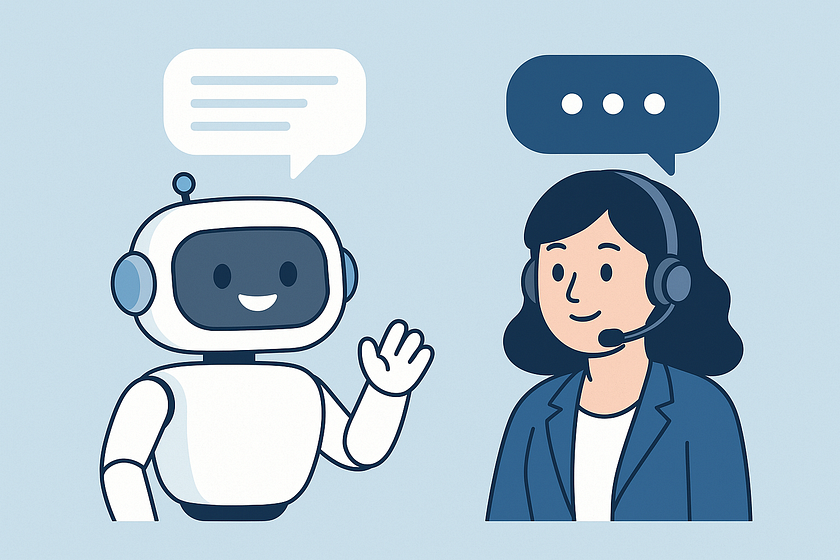The Rise of Chatbot Customer Service: Enhancing Support in the Digital Age

In today’s fast-paced, digitally driven world, customer expectations are evolving rapidly. People expect instant responses, 24/7 availability, and personalized service. Meeting these demands can be a daunting task for businesses — especially small to medium-sized enterprises with limited resources. Enter chatbot customer service: a revolutionary tool reshaping how companies interact with their customers.
What Are Customer Service Chatbots?
Chatbots are AI-powered programs designed to simulate human-like conversations with users. In the realm of customer service, these bots act as virtual assistants that can handle a wide array of tasks — from answering frequently asked questions to guiding users through complex troubleshooting processes. Unlike human agents, chatbots never sleep, making them an ideal solution for businesses striving to offer round-the-clock support.
Why Businesses Are Turning to Chatbots
1. 24/7 Availability
One of the most significant advantages of chatbot customer service is that it operates non-stop. Whether it’s midnight or a holiday, chatbots are always on duty. This continuous availability enhances customer satisfaction, as users no longer have to wait until business hours to get answers to simple queries.
2. Faster Response Times
Time is of the essence in customer service. According to a report by HubSpot, 90% of customers rate an “immediate” response as important when they have a customer service question. Chatbots provide instant responses, drastically reducing wait times and improving the overall customer experience.
3. Cost Efficiency
Hiring, training, and maintaining a human support team can be expensive. Chatbots offer a cost-effective alternative by handling a significant portion of routine customer inquiries. This not only reduces operational costs but also allows human agents to focus on more complex issues that require empathy and critical thinking.
4. Scalability
As a business grows, so does the volume of customer inquiries. Scaling a human support team to match this demand can be challenging. Chatbots, on the other hand, can handle thousands of conversations simultaneously without compromising quality, making them an ideal solution for scalability.
Real-World Applications
Chatbots are being used across various industries to streamline customer service. In e-commerce, they assist customers with order tracking, returns, and product recommendations. In banking, they help users check account balances, pay bills, and answer security questions. Healthcare providers use them for appointment scheduling and basic medical inquiries.
For example, a retail company might use a chatbot on its website to assist users in finding the right product based on their preferences. A telecom company might use a chatbot on WhatsApp to help customers troubleshoot internet issues. The versatility of chatbot technology makes it applicable to almost every sector.
Limitations and Challenges
While chatbots offer numerous advantages, they’re not without limitations. One of the primary concerns is their inability to handle nuanced or emotionally charged situations. Customers dealing with complex problems or personal issues may become frustrated if they’re unable to connect with a human agent promptly.
Another challenge is maintaining the chatbot’s knowledge base. To remain effective, chatbots must be continually updated with accurate and relevant information. A poorly maintained chatbot can lead to misinformation and diminished customer trust.
Moreover, not all customers are comfortable interacting with a bot. Some prefer human interaction, especially for sensitive issues. It’s crucial for businesses to offer a seamless handover from bot to human support when necessary.
Best Practices for Implementing Chatbots
To maximize the benefits of chatbot customer service, businesses should follow a few best practices:
- Set clear expectations: Let users know they are interacting with a bot and explain what it can and cannot do.
- Design with empathy: Even though chatbots are machines, their responses should be polite, empathetic, and customer-centric.
- Enable human escalation: Always offer an option for users to speak with a human if the chatbot cannot resolve their issue.
- Regularly update the chatbot’s knowledge: Keep it current with company policies, product updates, and customer feedback.
- Monitor and analyze performance: Use analytics to understand user behavior and continuously improve the chatbot experience.
The Future of Chatbot Customer Service
With advancements in natural language processing and machine learning, chatbots are becoming increasingly sophisticated. Future bots will be more conversational, context-aware, and capable of handling complex interactions. Voice-activated bots, integration with augmented reality, and deeper personalization are all on the horizon.
As artificial intelligence continues to evolve, chatbots will likely become an integral part of every customer service strategy. They won’t replace human agents entirely, but rather, they will complement them — creating a hybrid model that balances efficiency with empathy.
Final Thoughts
Chatbot customer service is no longer a novelty — it’s a necessity. In a world where customer experience can make or break a brand, chatbots provide a valuable tool for enhancing responsiveness, reducing costs, and increasing satisfaction. By embracing chatbot technology and implementing it thoughtfully, businesses can not only keep up with consumer expectations but also gain a competitive edge in an increasingly digital marketplace.


Comments
Post a Comment